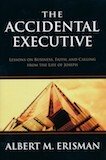With Great Yard Work Comes Great Responsibility
When we moved into our house, there were holes in the yard and grass to our shins. Weeds abounded. The previous owners, moved out by force, had dogs who dug and a garden with three sunken railroad ties long abandoned in the middle of the plot.
Mowing was an experience. The blades grazed at some points and shaved at others, and you had to weave around the larger holes (which we filled with wood temporarily to keep volunteers from twisting their ankles). Even walking on what sidewalk remained left you wanting more. Literally, it ended two-thirds of the way to the alley.
The whole picture was a sight.
Yet it was easy to maintain while we tended to inside projects. From the first crank of the mower to the padlock closing, it took me 20 minutes. No hassle, no edging, no weeding, no flowers to pick, vegetables to protect, or shrubs to thin. Easy as pie.
The thing is, I don’t like that kind of yard. There's nothing to take pride in. I’m visually allergic to weeds growing where they shouldn’t. I favor clean borders and geometric curves, balanced landscapes and paths to follow. (Arbors, for example, should transport you to someplace new.)
So I began to cultivate. Out came the railroad ties. Out came the old sidewalk. Out came the weeds. In came redistributed dirt, new seed, and clean borders. Where there used to be clods of dirt along the porch, there are now stones. Where we used to dump bricks and unearthed pieces of concrete, there is new soil. Last year’s transplants are taking off and also showing off. The yard is getting better every week.
It’s like it’s growing up. Our pre-teen girls dislike chores and a lot of the stuff grown ups do. Yet they want to do them. How often do they beg to push the mower, or dig with a shovel, or water the flowers and then turn around and complain when it becomes their duty? Our yard was completely happy doing its own thing, growing weeds wherever it wanted, moving the broken pieces of sidewalk here and there and making it unusable, taking no responsibility for its behavior. A real agricultural Peter Pan.
After two years of bridling, these 3000 square feet finally have a respectable appearance, but now I’m caught. On the one hand, the cultivation has added so much to our lives: the yard is where we eat on warm nights. The kids play in it every afternoon. We sit and look at it peacefully while the morning is still cool and our tea is still hot. It has become a refuge.
On the other hand, it no longer takes me 20 minutes to maintain. There is trimming, edging, weeding, mulching, protecting, pruning, and sweeping. I don’t pass through it without performing some act of cultivation. It’s beautiful, but it owns me. It pays dividends, but it costs me money. I love it, but now it’s like a pet to people who go on vacation.
This relationship is so much like every other relationship I have. When God placed Adam in the garden and told him to work it and take care of it, he was promising both sweat and payoff. These correlating elements show up at the office and in my exercise program, in my family and in my faith. Sweat and payoff go hand in hand. So while I could let my body do whatever it wants, eventually it would come to ruin. It must be cultivated.
Just yesterday, before the sun peeked over the roof, I sprayed my roses with a mixture of water and fungicide. They had grown four feet since April, but Black Spot is taking the leaves. I didn’t want to spend the $11 or worry about shriveling blooms, but that’s sweat. The payoff will come in the fall, when I will have forgotten the bill and my wife can fill vases for us and the neighbors.
Image by G. Used with permission. Sourced via Flickr. Post by Sam Van Eman.





